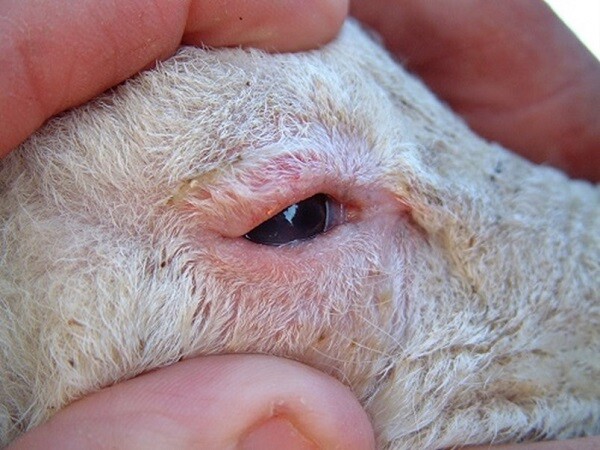

Pinkeye
Pinkeye is a bacterial disease spread by flies as they feed on discharges from the eyes. The diseases cause irritation and prevent the animal from eating, thereby negatively affecting milk production and reduces growth rate. Clinically, the disease presents as clouding of the eyeball which appears to protrude from the socket. If not treated, it results in blindness. Pinkeye can easily spread within herds when fly populations are high and during dry season. Cows in dry pastures can easily get injured and attract flies that will spread the disease.
The disease is treatable using sub conjunctival antibiotics and anti-inflammatory drugs. Control of flies is the best way to prevent the spread of pink eye in cows. This can be done through use of treated zero-grazing nets, pour-ons and other sprays. On farm hygiene through proper disposal of waste and keeping the dairy units clean can also deter flies.
Cancer of the Third Eyelid
Cancer of the eye as it is commonly known is the most frequently diagnosed cancer in cows. It affects the non-pigmented areas of the eyelid and the conjunctiva. One of the predisposing factors is long exposure to sunlight or ultraviolet light – this makes the disease very common in the tropics where animal graze out in hot sun. Viral diseases like Bovine pappilomavirus and infectious bovine rhinotracheitis virus are also known to predispose to this disease.
The tumour is common in animals over seven years old and rarely in those less than three years. Treatment is dependent on its location and how far it has spread. If localised, a vet will carry out a surgical removal of the tumour. Sadly, recurrences are common. Hence; in most cases, diagnosis of this condition results in culling of otherwise productive animals.
Eye Worms
Eye worms mainly affect cattle, horse and sheep but it can also be found in goats, pigs and dogs. Eye worm can measure up to 2cm and are white. On careful examination the worms can be seen scrawling on the eye. The worm has a rough cuticle which irritates and causes inflammation of the eye. The worms are spread by flies and infected animals will produce excess tears, avoid sunlight and the cornea becomes cloudy. Treatment include injectable anthelmintics and antibiotics. Fly control and separation of sick from the rest of the herd are mainly preventive measures in eye infections.
 Contact Jaguza Support
Contact Jaguza Support